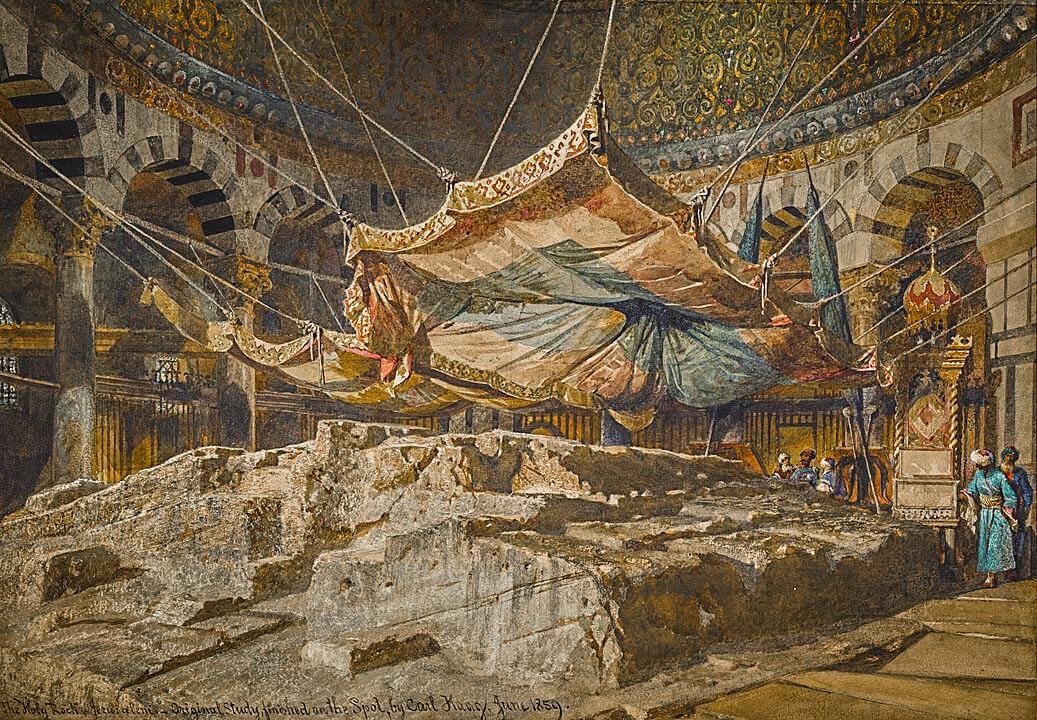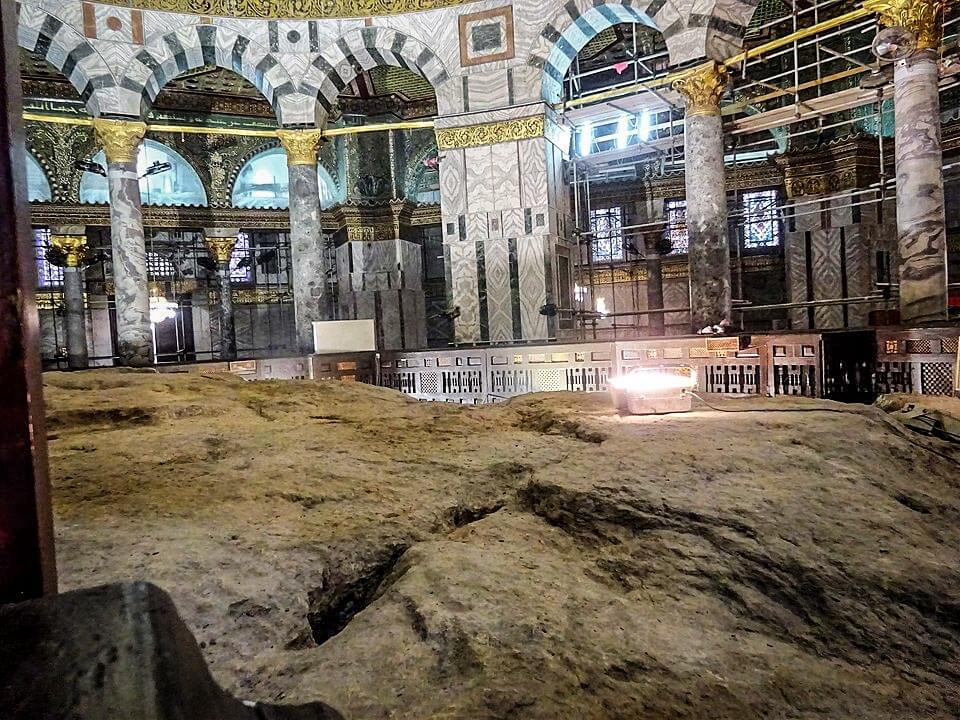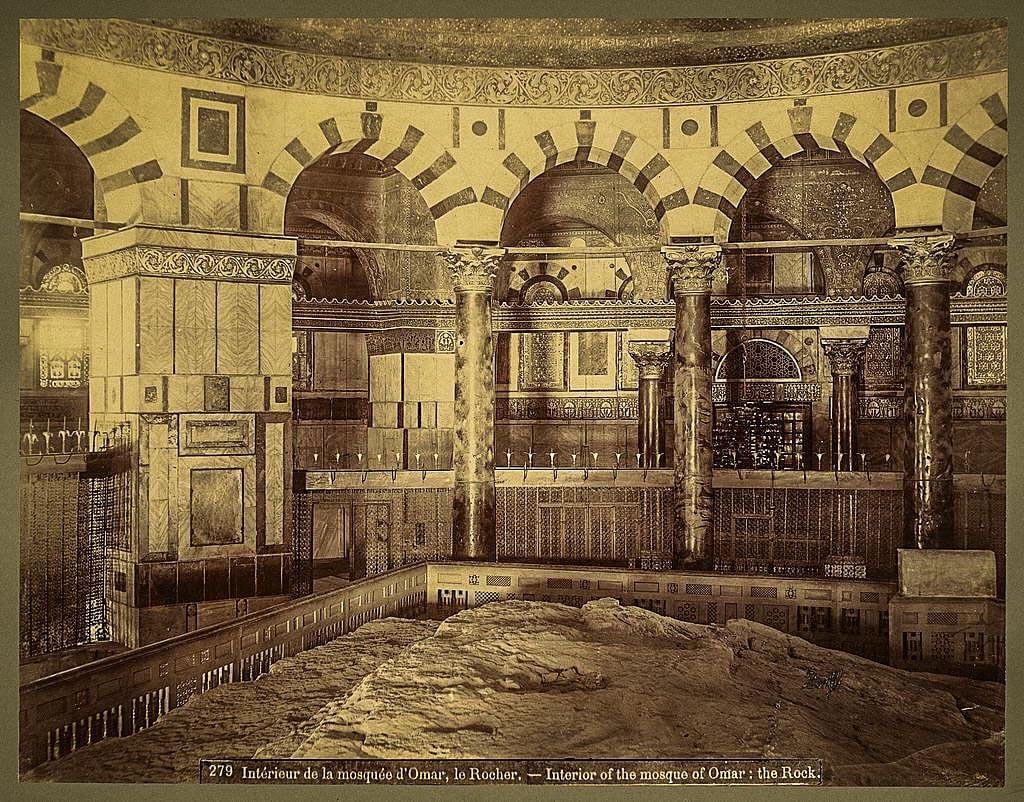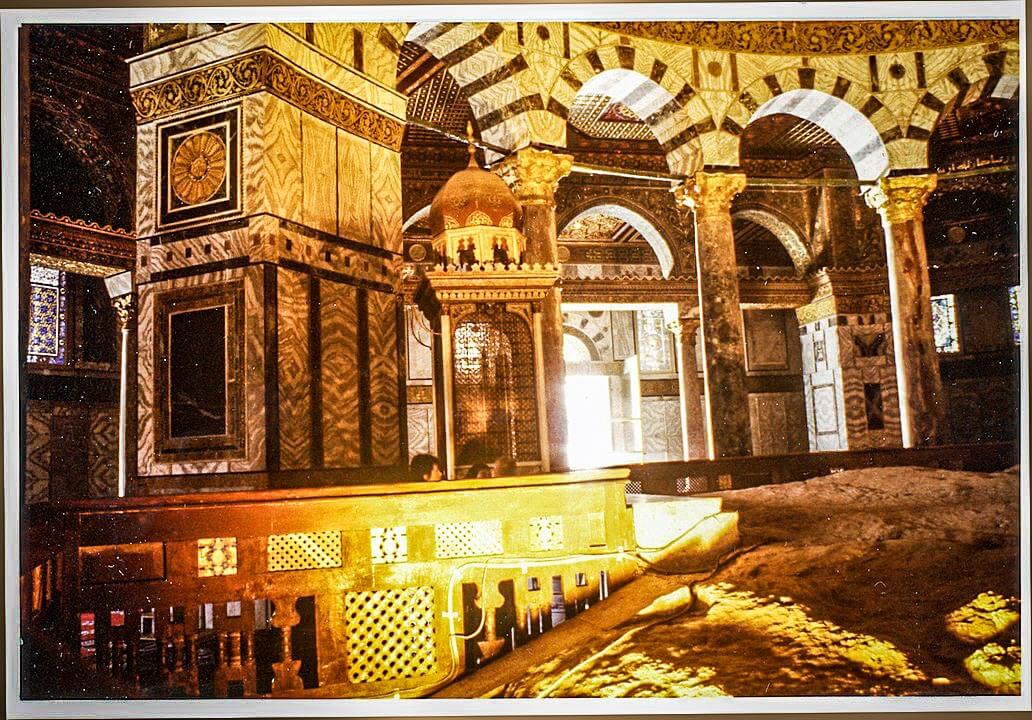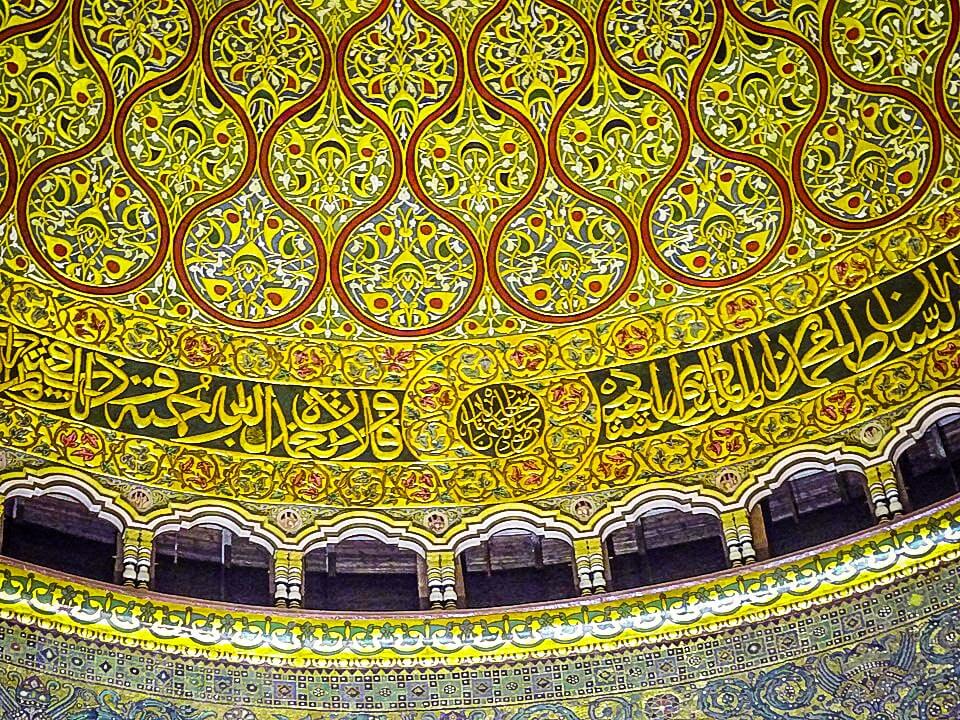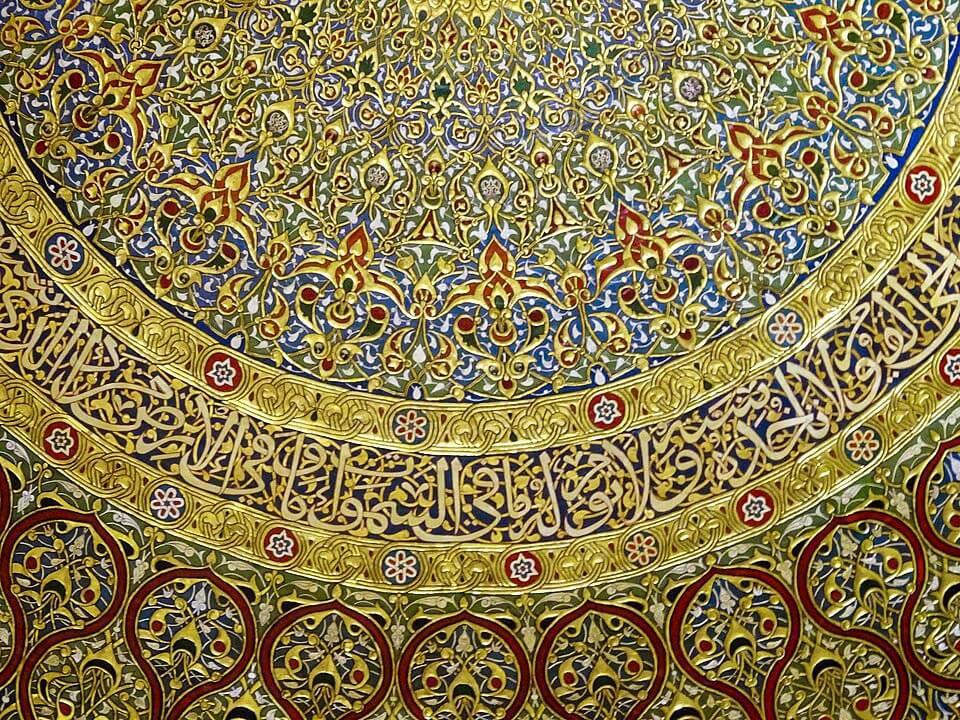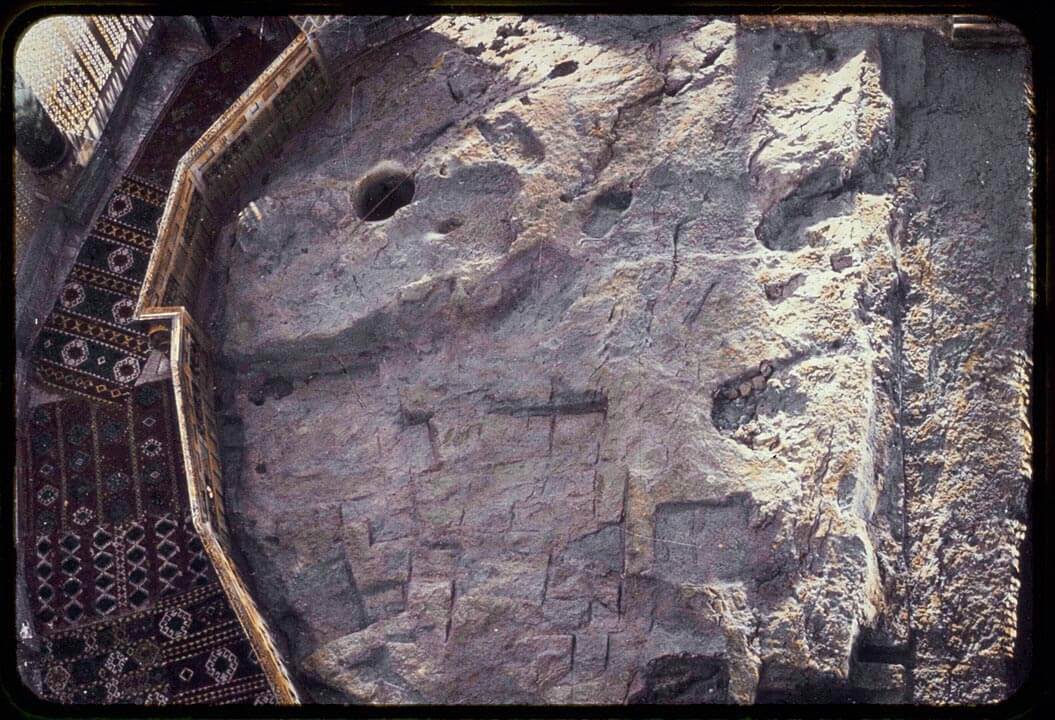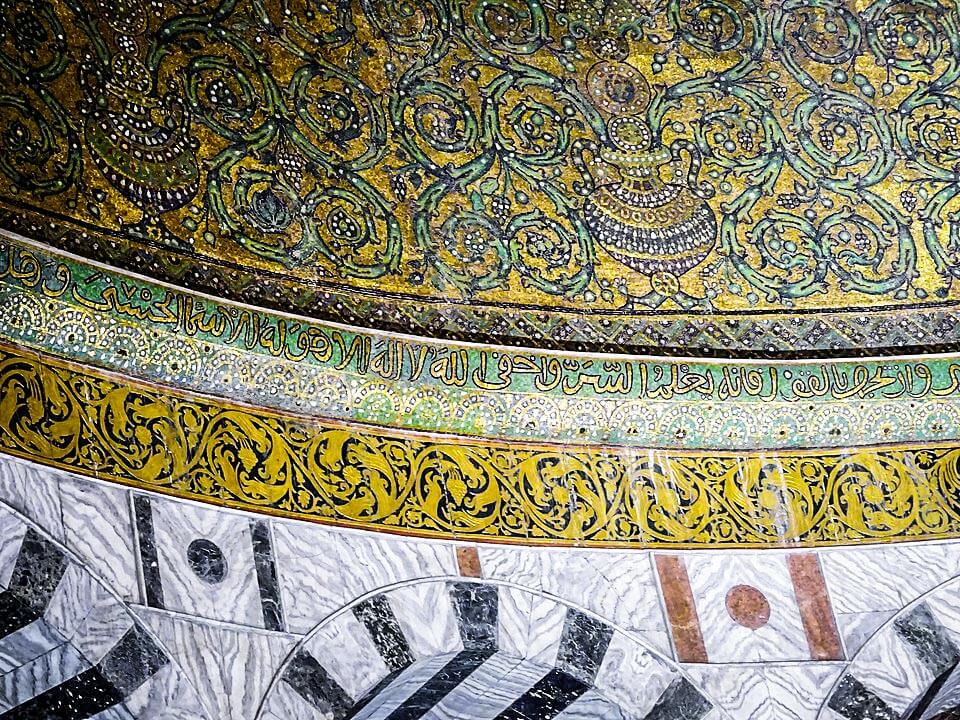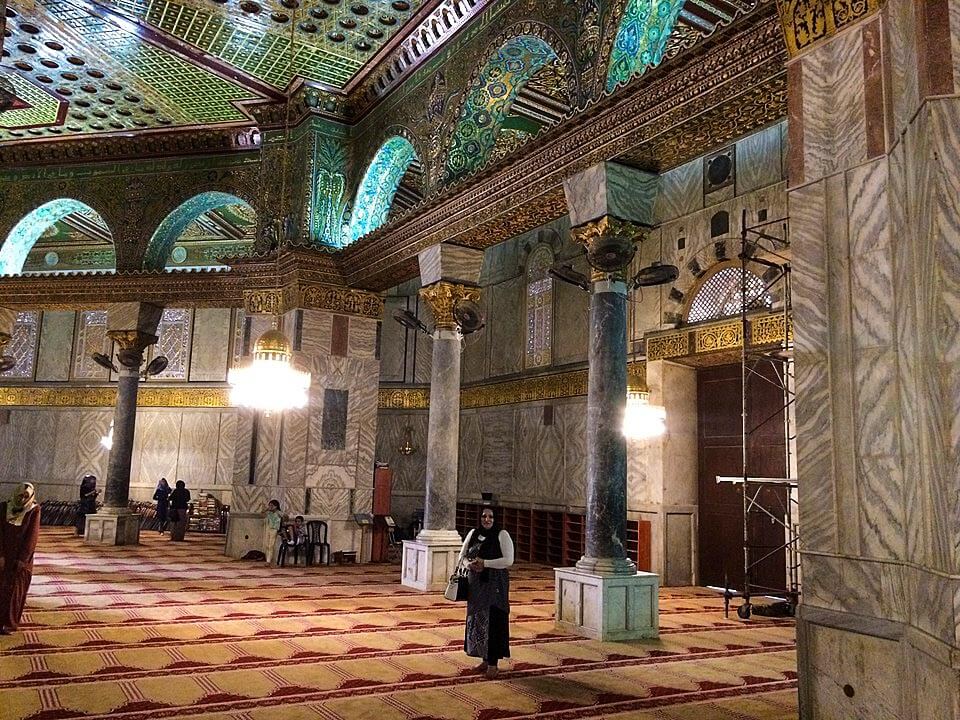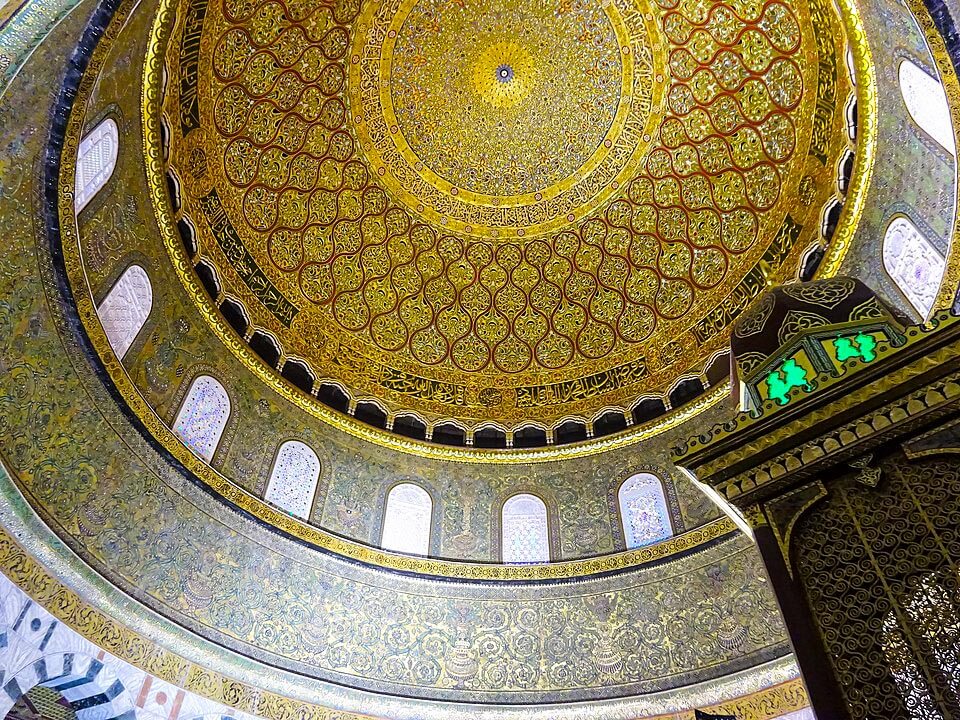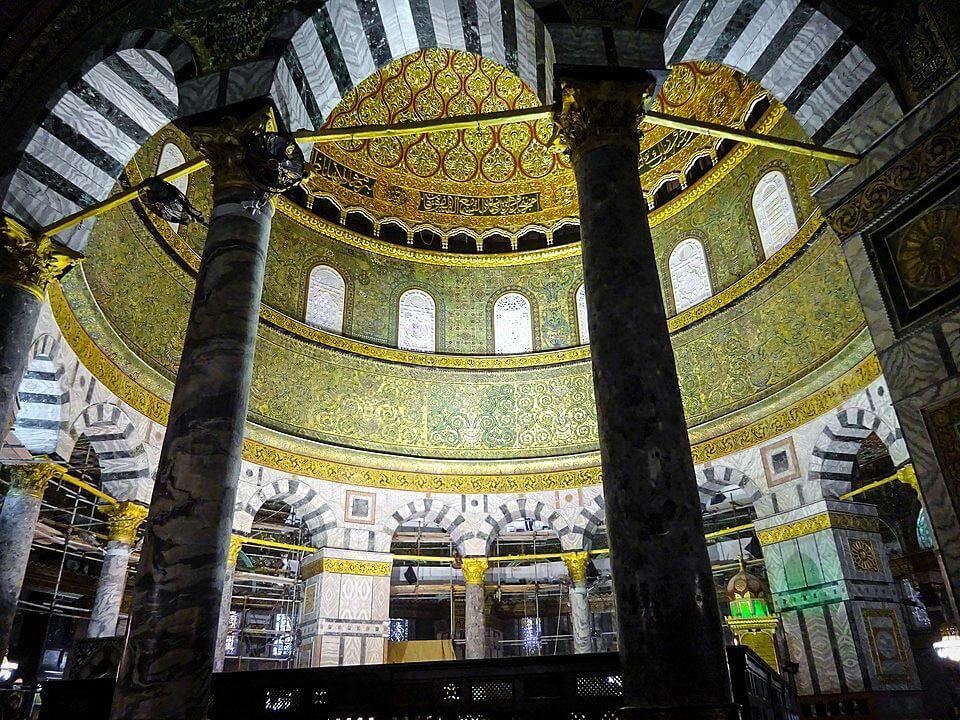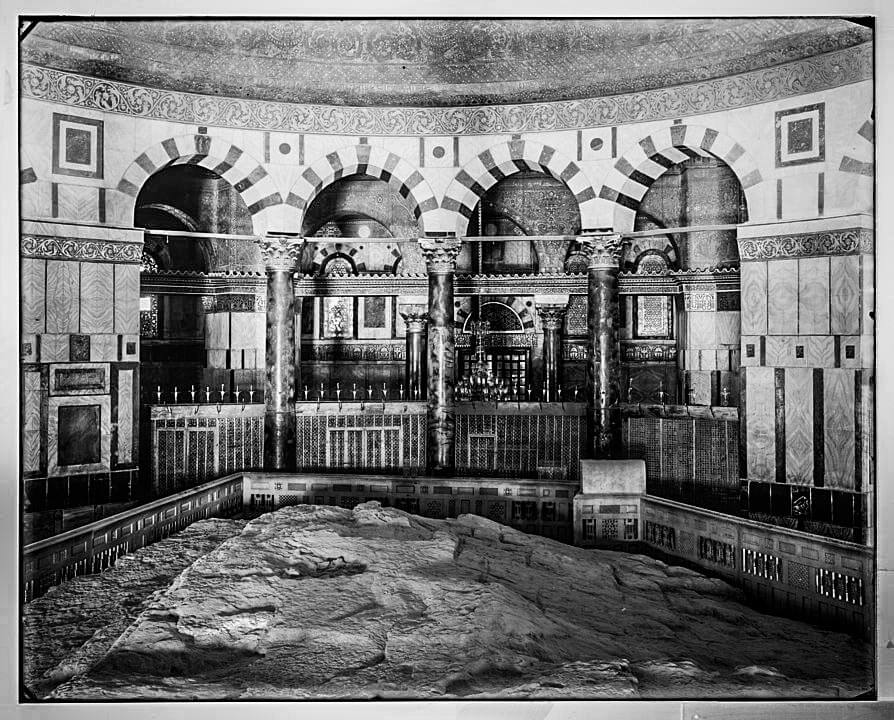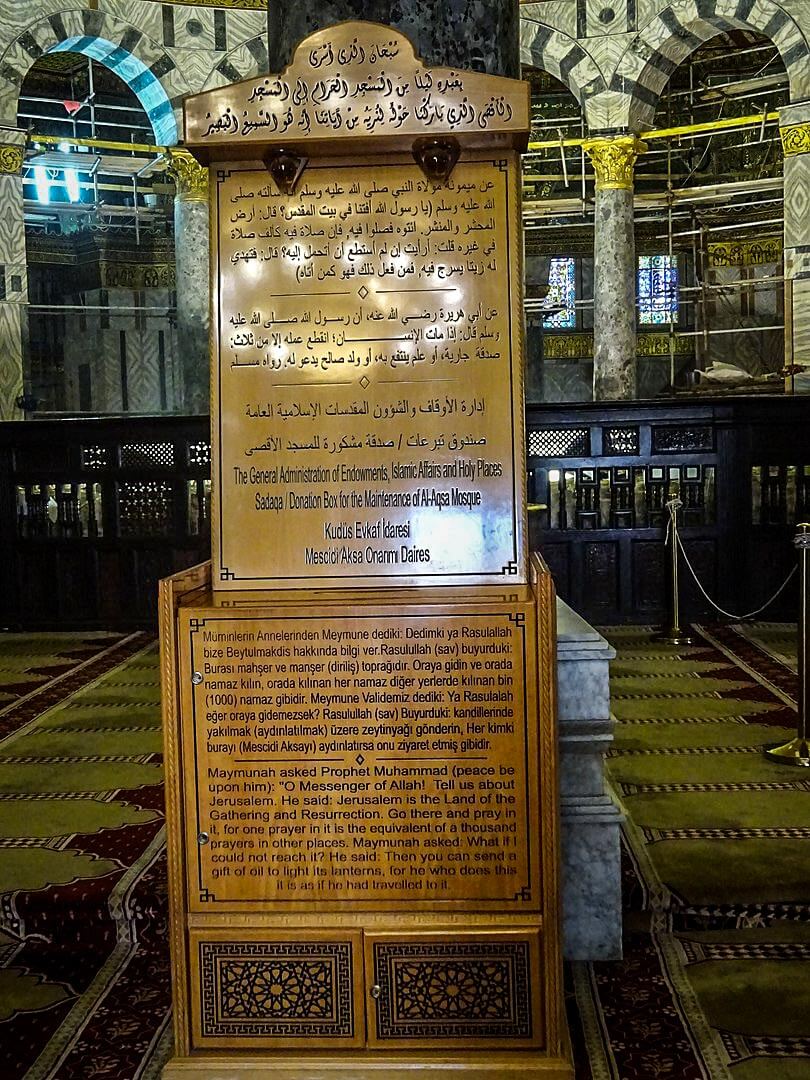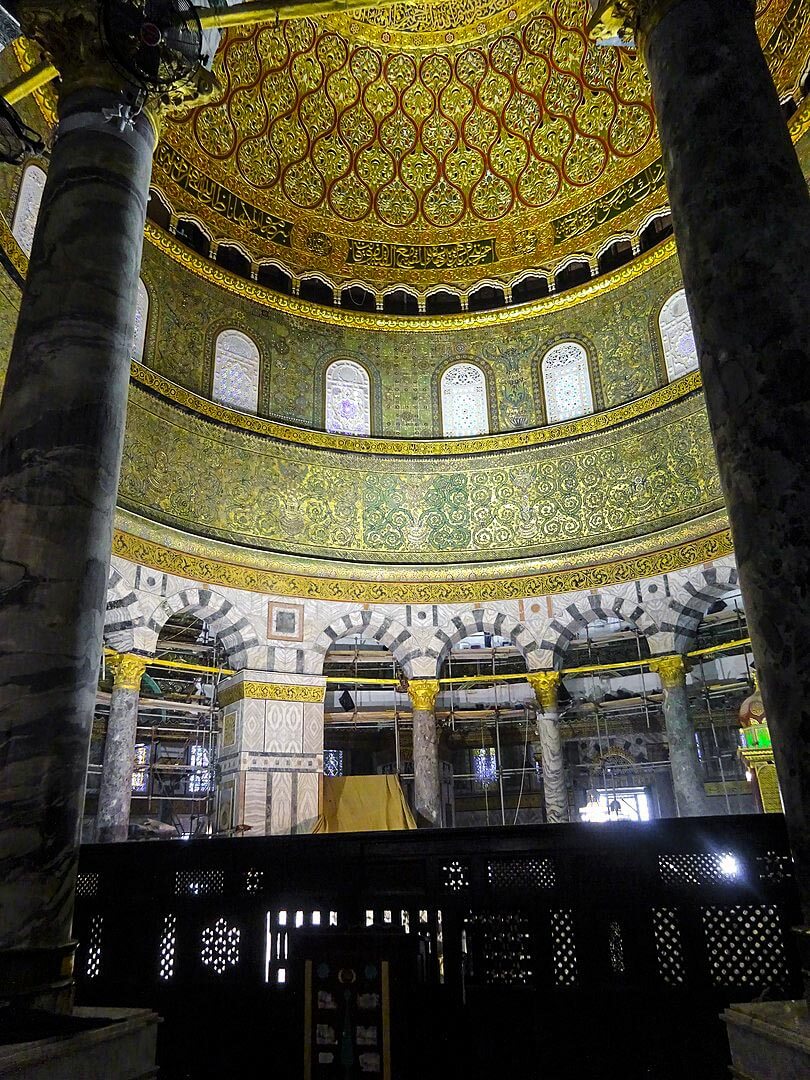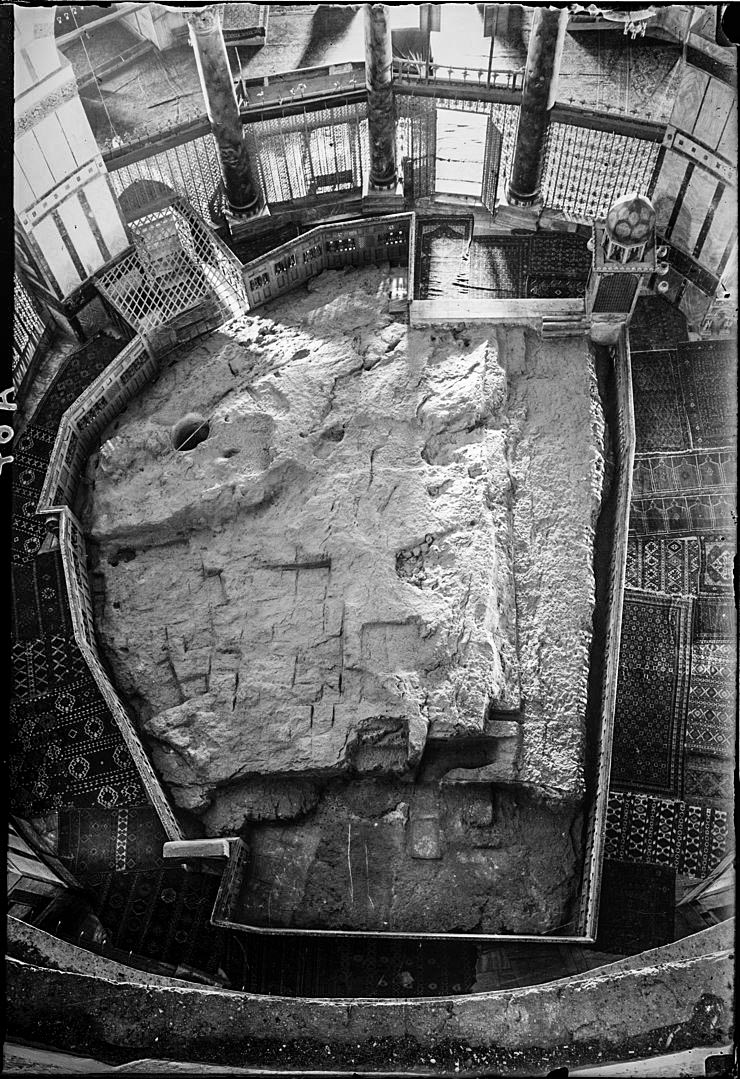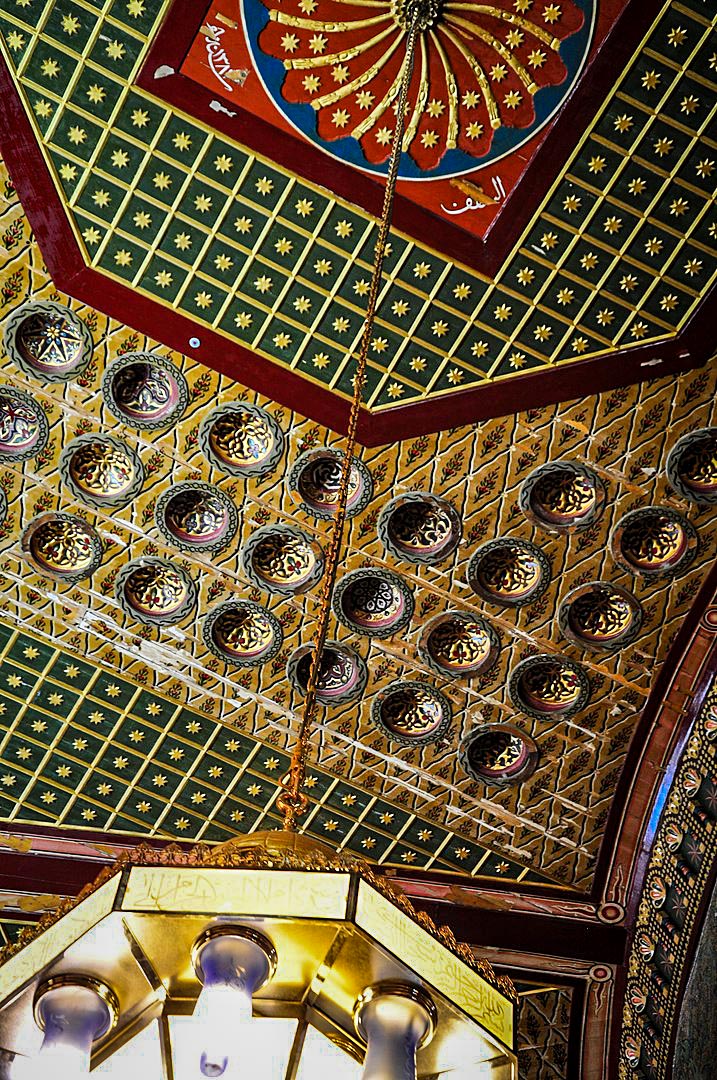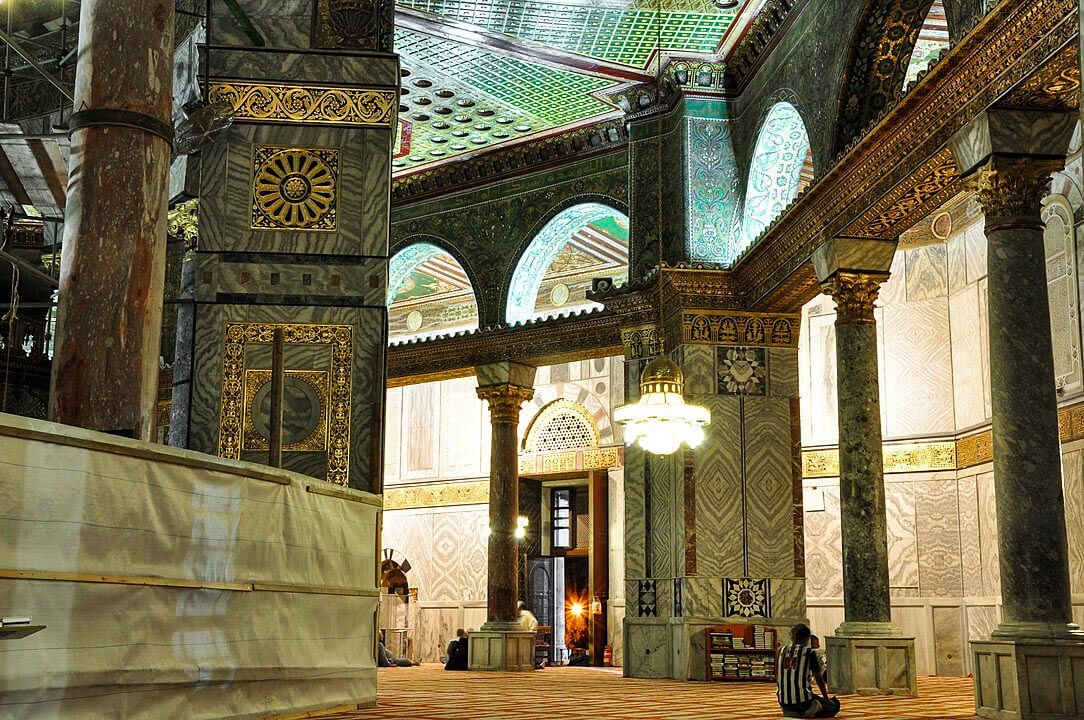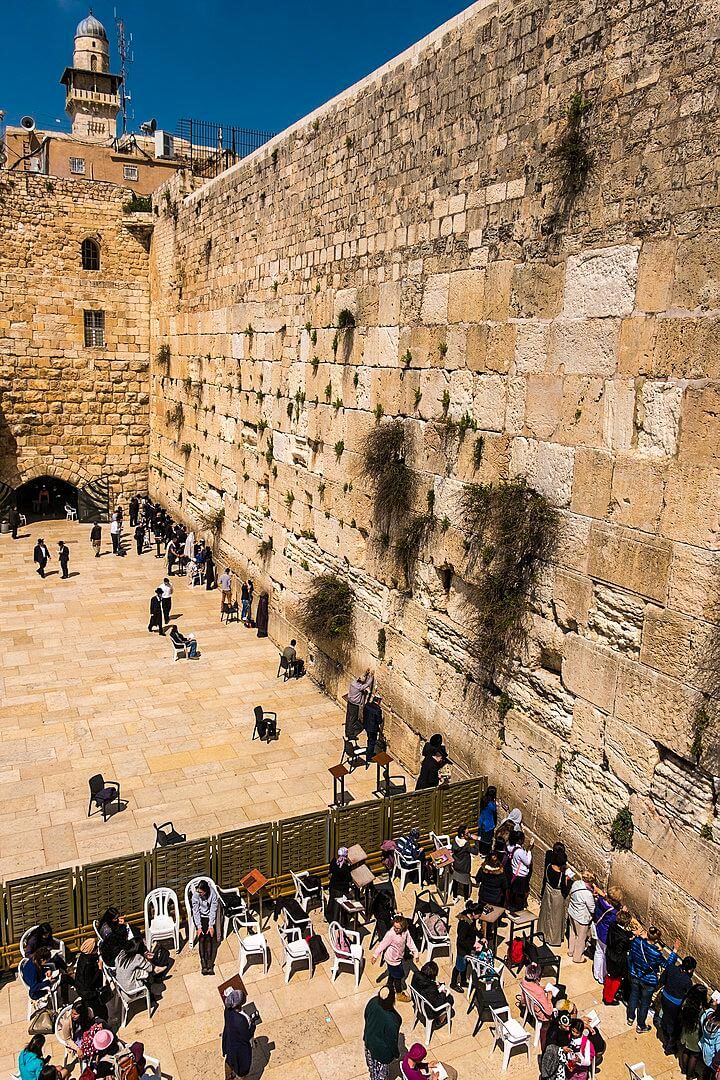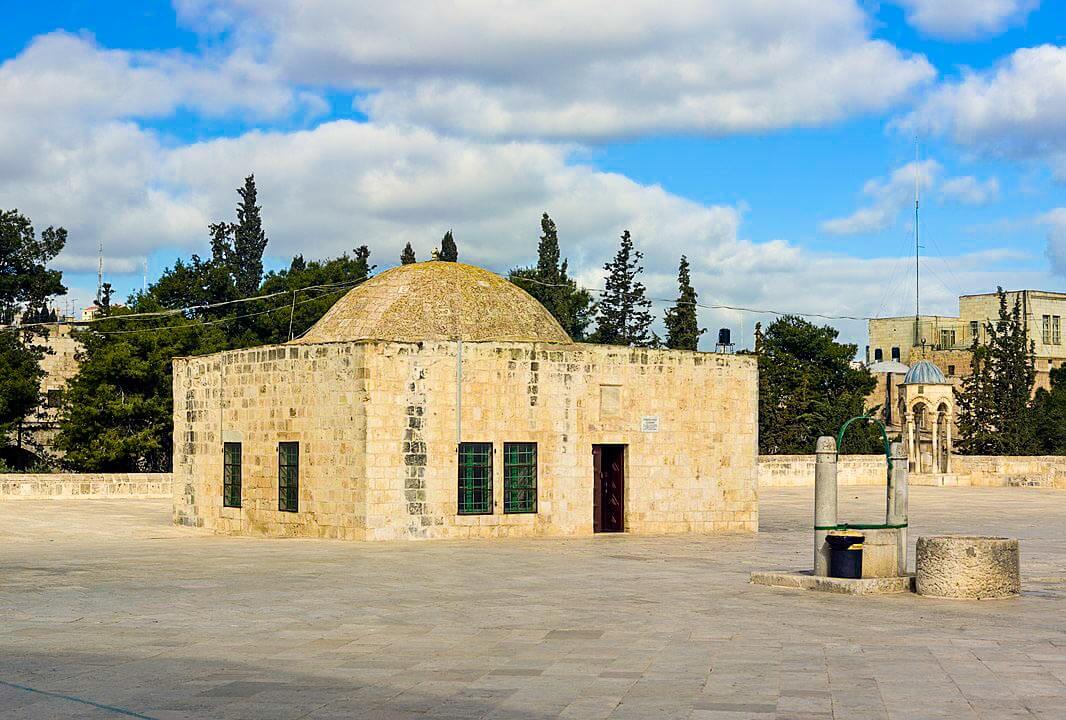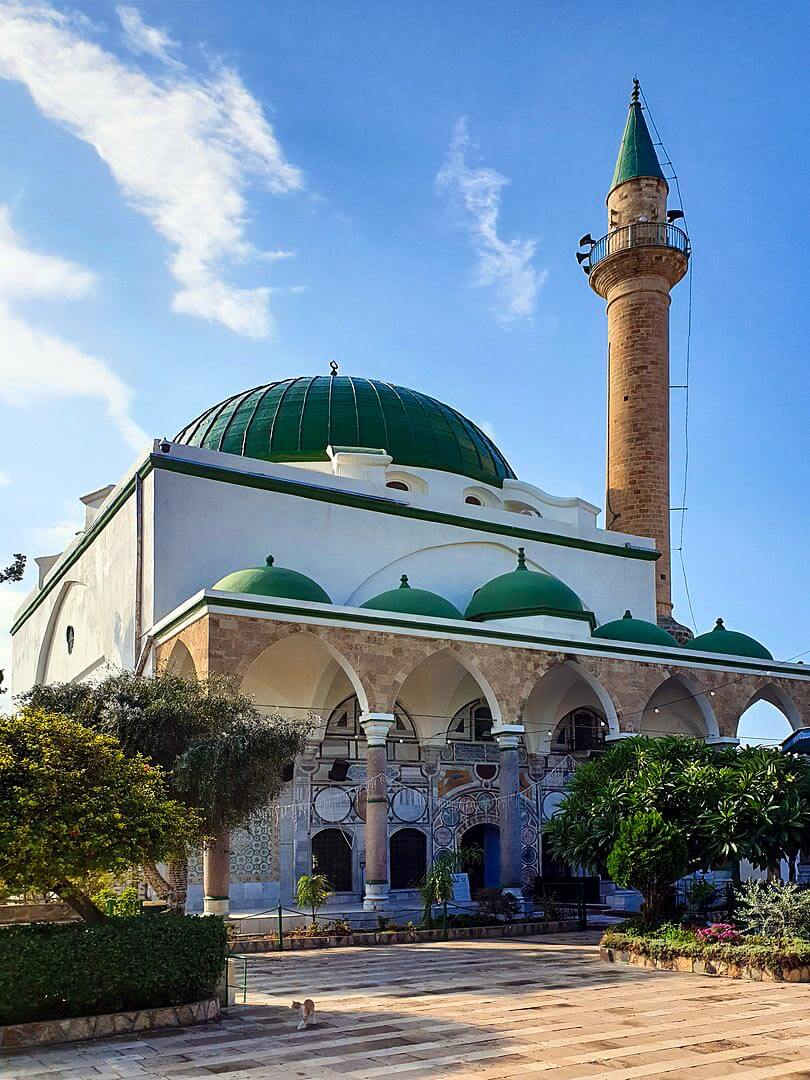Jerusalem, Palestine
Coordinates: 31.778025, 35.235406
Al-Sakhrah al-Musharrafah (lit. “The Noble Rock”) is the rock at the centre of the Dome of the Rock in Jerusalem.
The exposed bedrock directly under the dome — known as the Noble Rock to Muslims — is the spot from which Islamic tradition indicates Prophet Muhammad ﷺ ascended to heaven, and according to Islamic tradition. T
It is believed that the Stone tried to follow Prophet Muhammad ﷺ as he ascended, leaving his footprint here while pulling up and hollowing out the cave below.
The impression of the hand of the Hz. Jibrael عليه اسلام, made as he restrained the Stone from rising, is nearby.
According to Islamic belief, angels visited the site 2,000 years before the creation of Hz. Adam عليه اسلام.
It is also thought to be the place where Hz. Israfil عليه اسلام, the angel of the trumpet, will sound his horn on Resurrection Day.
Beneath the Foundation Stone is a cavern known as the Well of Souls.
There are three Mihrabs inside Dome of the Rock. They represent the three holiest places in Islam, the Ka’bah, Masjid-e-Nabwi and Masjid al-Aqsa.
There are eight main pillars holding up the building on each corner. There are four large supporting pillars around the neck of the dome, representing the four seasons in the year.
Difference between Islamic and jewish traditions regarding the stone
Jews and Christians believe this is the place where the Hz. Ibrahim عليه السلام was prepared to sacrifice his son Ishaq عليه السلام after seeing a dream indicating for him to do so.
This is a fundamental difference to the Muslim belief that it was actually his elder son Ismail عليه السلام who he was prepared to sacrifice and that this happened in Mina, Saudi Arabia.
The reason for this is that the sacrifice of Hz. Ibrahim’s عليه السلام son is very pivotal in the religion. Jews were the progeny of Hz. Yaqub عليه اسلام (son of Hz. Ishaq عليه اسلام) and Today’s arabs are progeny of Hz. Ismael عليه اسلام. So when the jews realized that the sacrifice was done with Hz. Ismael عليه اسلام, they changed it from the real torah with Hz. Ishaq عليه اسلام so that the respect is given to the Jews and not to the Arabs.
Interior decoration
The interior of the dome is lavishly decorated with mosaic, faience and marble, much of which was added several centuries after its completion. It also contains Qur’anic inscriptions. They vary from today’s standard text (mainly changes from the first to the third person) and are mixed with pious inscriptions not in the Quran.
Exterior decoration
The decoration of the outer walls went through two major phases: the initial Umayyad scheme comprised marble and mosaics, much like the interior walls. 16th-century Ottoman sultan Suleyman the Magnificent replaced it with Turkish faience tiles.
Surah Ya Sin (the ‘Heart of the Quran’) is inscribed across the top of the tile work and was commissioned in the 16th century by Suleiman the Magnificent. Al-Isra, the Surah 17 which tells the story of the Isra or Night Journey, is inscribed above this.


